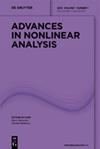A survey on some vanishing viscosity limit results
IF 3.7
1区 数学
Q1 MATHEMATICS
引用次数: 2
Abstract
Abstract We present a survey concerning the convergence, as the viscosity goes to zero, of the solutions to the three-dimensional evolutionary Navier-Stokes equations to solutions of the Euler equations. After considering the Cauchy problem, particular attention is given to the convergence under Navier slip-type boundary conditions. We show that, in the presence of flat boundaries (typically, the half-space case), convergence holds, uniformly in time, with respect to the initial data’s norm. In spite of this result (and of a similar result for arbitrary two-dimensional domains), strong inviscid limit results are proved to be false in general domains, in correspondence to a very large family of smooth initial data. In Section 6, we present a result in this direction.关于一些消失粘度极限结果的综述
摘要我们研究了三维演化Navier-Stokes方程解在粘性为零时的收敛性。在考虑Cauchy问题后,特别注意Navier滑移型边界条件下的收敛性。我们证明,在存在平坦边界的情况下(通常是半空间的情况),收敛性在时间上相对于初始数据的范数一致。尽管有这个结果(以及任意二维域的类似结果),强无粘极限结果在一般域中被证明是错误的,这与一个非常大的光滑初始数据族相对应。在第6节中,我们提出了这个方向的结果。
本文章由计算机程序翻译,如有差异,请以英文原文为准。
求助全文
约1分钟内获得全文
求助全文
来源期刊

Advances in Nonlinear Analysis
MATHEMATICS, APPLIED-MATHEMATICS
CiteScore
6.00
自引率
9.50%
发文量
60
审稿时长
30 weeks
期刊介绍:
Advances in Nonlinear Analysis (ANONA) aims to publish selected research contributions devoted to nonlinear problems coming from different areas, with particular reference to those introducing new techniques capable of solving a wide range of problems. The Journal focuses on papers that address significant problems in pure and applied nonlinear analysis. ANONA seeks to present the most significant advances in this field to a wide readership, including researchers and graduate students in mathematics, physics, and engineering.
 求助内容:
求助内容: 应助结果提醒方式:
应助结果提醒方式:


